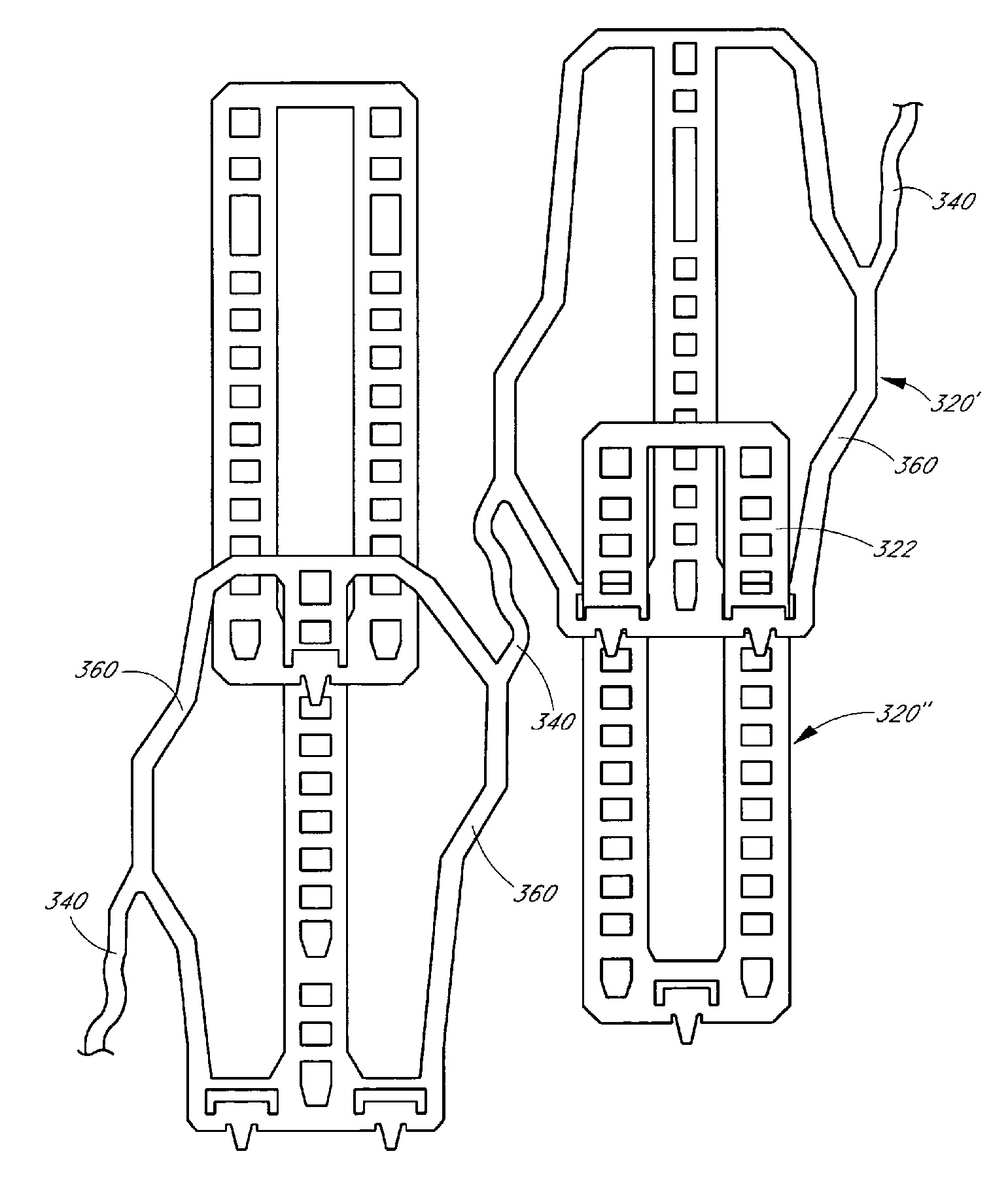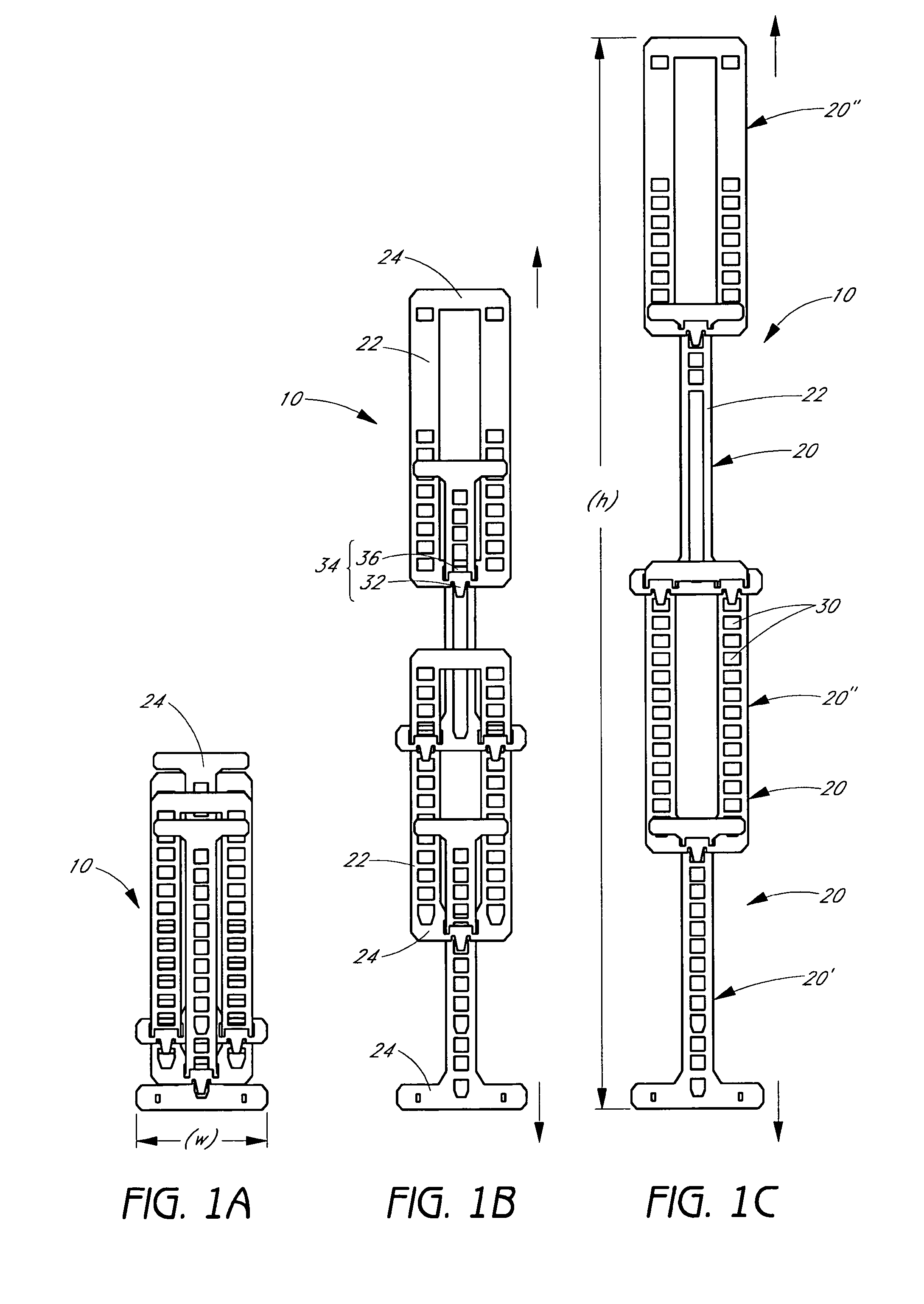Expandable stent with sliding and locking radial elements
a radial element, expandable technology, applied in the direction of prosthesis, blood vessels, food packaging, etc., can solve the problems of restenosis of the dilated vessel, significant difficulties have been encountered with all prior art stents, and metal prongs from the cutting process remain at the longitudinal ends
- Summary
- Abstract
- Description
- Claims
- Application Information
AI Technical Summary
Benefits of technology
Problems solved by technology
Method used
Image
Examples
Embodiment Construction
Stent Design
[0044]The present invention relates to a radially expandable stent used to open, or to expand a targeted area in a body lumen. In one preferred embodiment of the present invention, the assembled stent comprises a tubular member having a length in the longitudinal axis and a diameter in the radial axis, of appropriate size to be inserted into the body lumen. The length and diameter of the tubular member may vary considerably for deployment in different selected target lumens depending on the number and configuration of the structural components, described below. The tubular member is adjustable from at least a first collapsed diameter to at least a second expanded diameter. One or more stops and engaging elements or tabs are incorporated into the structural components of the tubular member whereby recoil (i.e., collapse from an expanded diameter to a more collapsed diameter) is minimized to less than about 5%.
[0045]The tubular member in accordance with the present inventi...
PUM
| Property | Measurement | Unit |
|---|---|---|
| thickness | aaaaa | aaaaa |
| diameter | aaaaa | aaaaa |
| thickness | aaaaa | aaaaa |
Abstract
Description
Claims
Application Information
 Login to View More
Login to View More - R&D
- Intellectual Property
- Life Sciences
- Materials
- Tech Scout
- Unparalleled Data Quality
- Higher Quality Content
- 60% Fewer Hallucinations
Browse by: Latest US Patents, China's latest patents, Technical Efficacy Thesaurus, Application Domain, Technology Topic, Popular Technical Reports.
© 2025 PatSnap. All rights reserved.Legal|Privacy policy|Modern Slavery Act Transparency Statement|Sitemap|About US| Contact US: help@patsnap.com



